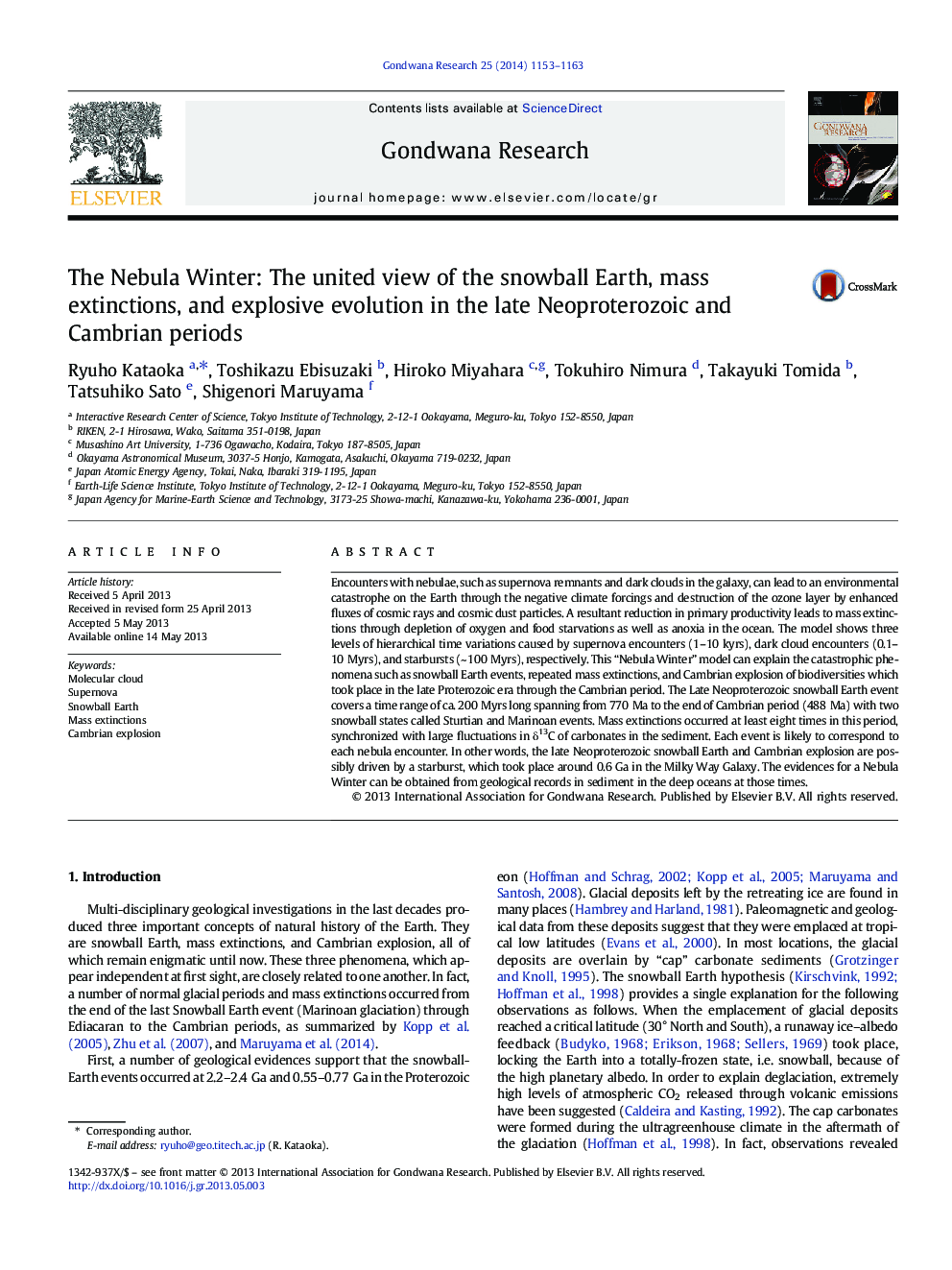| کد مقاله | کد نشریه | سال انتشار | مقاله انگلیسی | نسخه تمام متن |
|---|---|---|---|---|
| 4726981 | 1356355 | 2014 | 11 صفحه PDF | دانلود رایگان |
• Nebula encounter leads to an environmental catastrophe: Nebula Winter.
• Supernova remnant (1–10 kyrs), dark cloud (0.1–10 Myrs), and starbursts (~ 100 Myrs)
• Unified view to explore the late Neoproterozoic and Cambrian periods
• Evidences can be obtained in sediment in the deep oceans at those times.
Encounters with nebulae, such as supernova remnants and dark clouds in the galaxy, can lead to an environmental catastrophe on the Earth through the negative climate forcings and destruction of the ozone layer by enhanced fluxes of cosmic rays and cosmic dust particles. A resultant reduction in primary productivity leads to mass extinctions through depletion of oxygen and food starvations as well as anoxia in the ocean. The model shows three levels of hierarchical time variations caused by supernova encounters (1–10 kyrs), dark cloud encounters (0.1–10 Myrs), and starbursts (~ 100 Myrs), respectively. This “Nebula Winter” model can explain the catastrophic phenomena such as snowball Earth events, repeated mass extinctions, and Cambrian explosion of biodiversities which took place in the late Proterozoic era through the Cambrian period. The Late Neoproterozoic snowball Earth event covers a time range of ca. 200 Myrs long spanning from 770 Ma to the end of Cambrian period (488 Ma) with two snowball states called Sturtian and Marinoan events. Mass extinctions occurred at least eight times in this period, synchronized with large fluctuations in δ13C of carbonates in the sediment. Each event is likely to correspond to each nebula encounter. In other words, the late Neoproterozoic snowball Earth and Cambrian explosion are possibly driven by a starburst, which took place around 0.6 Ga in the Milky Way Galaxy. The evidences for a Nebula Winter can be obtained from geological records in sediment in the deep oceans at those times.
Figure optionsDownload as PowerPoint slide
Journal: Gondwana Research - Volume 25, Issue 3, April 2014, Pages 1153–1163
